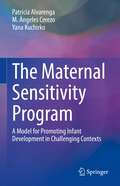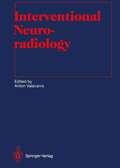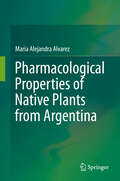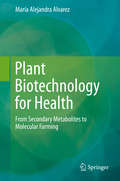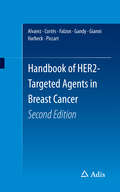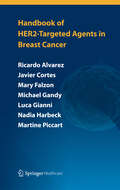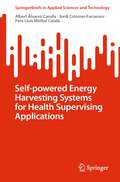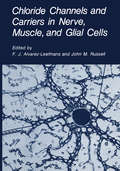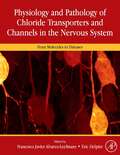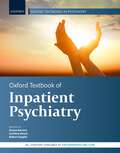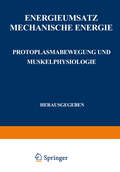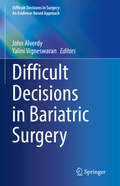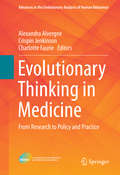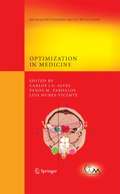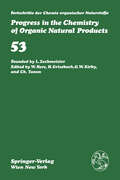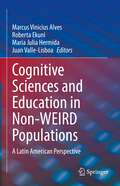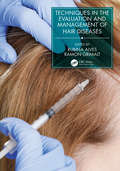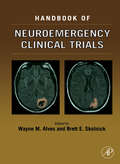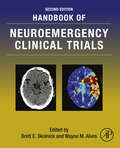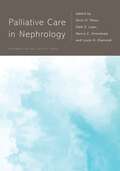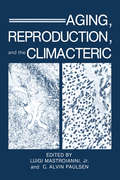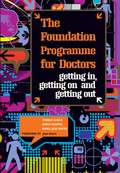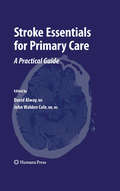- Table View
- List View
The Maternal Sensitivity Program: A Model for Promoting Infant Development in Challenging Contexts
by Patrícia Alvarenga M. Ángeles Cerezo Yana KuchirkoThis book presents the Maternal Sensitivity Program (MSP), an eight-session home-delivered intervention designed to enhance overall maternal sensitivity to infant behavior between the third and the tenth month of life using video feedback and live modeling strategies. The intervention was based on successful international programs but was specifically developed to fit the realities and needs of low-income countries, whose public health services rely on scarce human and economic resources. The program aims to promote maternal acknowledgment of infant mental activity and model responses that encourage infants' communication of intentions, needs, desires, and emotions.The first part of the book provides an overview of core theories related to the concept of maternal sensitivity, illustrating how it varies across cultural contexts, and how it is shaped by economic scarcity. The second part of the book presents evidence of the effectiveness of sensitivity-based interventions, describes and provides a rationale for the Maternal Sensitivity Program (MSP), and proposes a framework for training interventionists seeking to implement the program in different contexts. The third part of the book presents the intervention manual, describing in detail the procedures in each of the eight sessions of the program. The Maternal Sensitivity Program: A Model for Promoting Infant Development in Challenging Contexts will be an invaluable resource for developmental psychologists, health care providers, and social workers who work with families in low-income countries and in contexts of social vulnerability and need to implement low-cost interventions to foster healthy child development.
Interventional Neuroradiology (Medical Radiology)
by H. Alvarez A. Berenstein I. S. Choi G. M. Debrun J. M. Eskridge G. Fabris R. Garcia-Monaco G. Guglielmi V. V. Halbach P. Lasjaunias A. Lavaroni M. Leonardi G. Rodesch A. Setton Anton Valavanis S. M. Wolpert F. Zanella H. ZeumerThe methods of interventional neuroradiology represent a distinct and difficult branch with in the new field of interventional radiology. The editor of this volume, Anton Valavanis, is a pioneer in this area, and one of the outstanding neuroradiologists in the world. Furthermore, he has brought together the foremost scientists and clinical neuroradiologists in the field to present the individual chapters. The book gives an overview ofthe state of the art in interventional neuroradiology. Each of the 12 chapters is devoted to a disease which can be treated by interventional neuroradio logical techniques. Pertinent information is provided on anatomical detail, technical back ground, and clinical aspects; in each case a detailed description of the indications, techniques, and possible complications of interventional neuroradiology is provided. Due consideration is given to the endovascular and nonvascular applications of the techniques. This book is the first comprehensive update of interventional neuroradiology and will acquaint the reader with well-established facts, recent advances, and future perspectives within this new discipline. It will be of special value to those working in neuroradiology but will also prove very helpful for neurosurgeons, neurologists, and ophthalmologists, as well as all physicians and researchers in the clinical neurosciences. We hope that the book will meet with the reception and success that it undoubtedly merits.
Pharmacological Properties of Native Plants from Argentina
by María Alejandra AlvarezThe aim of this book is to offer information about the Pharmacological Properties of Native Plants from Argentina to students, researchers and graduates interested in the fields of Ethnobotany, Pharmacognosy, Phytochemistry, Pharmacy, and Medicine. The book includes summary information about the native plants from Argentina with medical activity comprising their botanical characteristics, distribution, characteristics of the regions where they grow, ethnobotanical information, chemical data, biological activity, establishment of in vitro cultures, toxicity, and legal status.
Plant Biotechnology for Health: From Secondary Metabolites to Molecular Farming
by Maria Alejandra AlvarezIn this book emphasis will be put in the relevance of Plant Biotechnology for producing compounds of pharmaceutical and industrial relevance specifically the contribution of in vitro plant cell cultures for producing recombinant proteins (molecular farming) and compounds produced by plants useful for human and animal health (secondary metabolites) will be discussed. Also the description of some process held by whole plants will be included. The aim will be to provide relevant theoretical frameworks and the latest empirical research findings for professionals and researchers working in the field of Plant Biotechnology, molecular farming and biochemical engineering.
Handbook of HER2-Targeted Agents in Breast Cancer
by Ricardo H Alvarez Javier Cortés Mary Falzon Michael Gandy Luca Gianni Nadia Harbeck Martine PiccartThis concise handbook provides oncologists and other healthcare providers with crucial updates in the field, including an updated review of the current understanding of the biology of the HER2 pathway, an overview of HER2-testing, and evidence-based discussions of available and emerging HER2-targeted treatment options. An essential clinical text for physicians that screen and treat patients with breast cancer and require an accessible, up-to-date survey of the dynamic treatment landscape.
Handbook of HER2-targeted agents in breast cancer
by Ricardo H Alvarez Javier Cortés Leticia Mattos-Arruda Mary Falzon Angelica Fasolo Michael Gandy Luca Gianni Nadia Harbeck Martine Piccart Stefania Zambelli Dimitrios ZardavasBreast cancer is the most frequently diagnosed cancer and the leading cause of cancer death in women worldwide, accounting for nearly a quarter of the total new cancer cases each year. Of these cases, approximately 15–25% overexpress HER2, a transmembrane RTK kinase that is associated with aggressive tumor growth and poor outcomes. However, in the past decade, survival rates of patients with HER-positive breast cancer have significantly improved due to increased screening, HER2 testing, and breakthrough HER2-targeted drug therapies. Handbook of HER2-Targeted Agents in Breast Cancer provides oncologists, primary care physicians, trainees and other healthcare providers with a concise, accessible, and up-to-date survey of the field, including a review of our current understanding of the biology of the HER2 pathway and the rationale for targeting it in early-stage and advanced breast cancer, an overview of HER2-testing, and evidence-based discussions of available HER2-targeted regimens in the adjuvant and metastatic settings.
Self-powered Energy Harvesting Systems for Health Supervising Applications (SpringerBriefs in Applied Sciences and Technology)
by Albert Álvarez-Carulla Jordi Colomer-Farrarons Pere Lluís Miribel CatalàThis book highlights the current and recent state-of-the-art developments in energy harvesting systems for health supervising applications. It explores the exciting potential of energy harvesting as a crosscutting field of research to intersect with other areas to envisage new products, solutions, and applications. Among all these new opportunities for synergy, there is a research area that fully matches the features offered by energy harvesting with its power supply's main needs- health supervising (HS), which consists of monitoring the health or operating conditions of anything, such as structures, buildings, public health, environment, etc. The book covers the hand in hand evolution towards a new paradigm: truly self-powered devices based on a single transducer acting as a sensor and as power source simultaneously and efficiently. This evolution is illustrated by the concept and implementation of novel state-of-the-art architecture for self-powered energy harvesting systems for applications that range from structural health monitoring to point-of-care medical devices.
Chloride Channels and Carriers in Nerve, Muscle, and Glial Cells
by F. J. Alvarez-Leefmans John M. RussellThis is a book about how Cl- crosses the cell membranes of nerve, muscle, and glial cells. Not so very many years ago, a pamphlet rather than book might have resulted from such an endeavor! One might ask why Cl-, the most abundant biological anion, attracted so little attention from investigators. The main reason was that the prevailing paradigm for cellular ion homeostasis in the 1950s and 1960s assigned Cl- a ther modynamically passive and unspecialized role. This view was particularly prominent among muscle and neuroscience investigators. In searching for reasons for such a negative (no pun intended) viewpoint, it seems to us that it stemmed from two key experimental observations. First, work on frog skeletal muscle showed that Cl- was passively distributed between the cytoplasm and the extracellular fluid. Second, work on Cl- transport in red blood cells confirmed that the Cl- transmembrane distribution was thermodynamically passive and, in addition, showed that Cl- crossed the mem brane extremely rapidly. This latter finding [for a long time interpreted as being the result of a high passive chloride electrical permeability(? CI)] made it quite likely that Cl- would remain at thermodynamic equilibrium. These two observations were gener alized and virtually all cells were thought to have a very high P Cl and a ther modynamically passive Cl- transmembrane distribution. These concepts can still be found in some physiology and neuroscience textbooks.
Physiology and Pathology of Chloride Transporters and Channels in the Nervous System: From Molecules to Diseases
by F. Javier Alvarez-Leefmans Eric DelpireThe importance of chloride ions in cell physiology has not been fully recognized until recently, in spite of the fact that chloride (Cl-), together with bicarbonate, is the most abundant free anion in animal cells, and performs or determines fundamental biological functions in all tissues. For many years it was thought that Cl- was distributed in thermodynamic equilibrium across the plasma membrane of most cells. Research carried out during the last couple of decades has led to a dramatic change in this simplistic view. We now know that most animal cells, neurons included, exhibit a non-equilibrium distribution of Cl- across their plasma membranes. Over the last 10 to 15 years, with the growth of molecular biology and the advent of new optical methods, an enormous amount of exciting new information has become available on the molecular structure and function of Cl- channels and carriers. In nerve cells, Cl- channels and carriers play key functional roles in GABA- and glycine-mediated synaptic inhibition, neuronal growth and development, extracellular potassium scavenging, sensory-transduction, neurotransmitter uptake and cell volume control. Disruption of Cl- homeostasis in neurons underlies pathological conditions such as epilepsy, deafness, imbalance, brain edema and ischemia, pain and neurogenic inflammation. This book is about how chloride ions are regulated and how they cross the plasma membrane of neurons. It spans from molecular structure and function of carriers and channels involved in Cl- transport to their role in various diseases.The first comprehensive book on the structure, molecular biology, cell physiology, and role in diseases of chloride transporters / channels in the nervous system in almost 20 yearsChloride is the most abundant free anion in animal cells. THis book summarizes and integrates for the first time the important research of the past two decades that has shown that Cl- channels and carriers play key functional roles in GABA- and glycine-mediated synaptic inhibition, neuronal growth and development, extracellular potassium scavenging, sensory-transduction, neurotransmitter uptake and cell volume controlThe first book that systematically discusses the result of disruption of Cl- homeostasis in neurons which underlies pathological conditions such as epilepsy, deafness, imbalance, brain edema and ischemia, pain and neurogenic inflammationSpanning topics from molecular structure and function of carriers and channels involved in Cl- transport to their role in various diseasesInvolves all of the leading researchers in the fieldIncludes an extensive introductory section that covers basic thermodynamic and kinetics aspects of Cl- transport, as well as current methods for studying Cl- regulation, spanning from fluorescent dyes in single cells to knock-out models to make the book available for a growing population of graduate students and postdocs entering the field
Oxford Textbook of Inpatient Psychiatry (Oxford Textbooks in Psychiatry)
by Alvaro Barrera, Caroline Attard, and Robert ChaplinInpatient mental health care is an essential part of community-based mental health care in the UK. Patients admitted to acute mental health wards are often experiencing high levels of distress and acute mental illness and need to be assessed, managed, and treated by a wide team of mental health care professionals. Inpatient care is often a traumatic experience for patients and their relatives which can define their relationship with mental health care services. Reforming inpatient psychiatry is a priority for both patients and staff, yet there are few reference texts on this psychiatric specialty. The Oxford Textbook of Inpatient Psychiatry bridges this gap by offering a comprehensive and pragmatic guide to the UK's inpatient mental health care system today. Written and edited by a multidisciplinary team, this innovative resource discusses the real-life experiences and challenges of a wide range of professionals working on acute mental health wards. Organized into 8 sections this resource covers nursing, team leadership, multidisciplinary work, psychology, and medical aspects. Individual chapters address key topics such as the management of children and adolescents, and contain information on up-to-date research and best practice. Focusing on the dignity and autonomy of patients, this unique resource offers a model for clinical and organizational practice both at a national and international level.
Energieumsatz: Erster Teil: Mechanische Energie. Protoplasmabewegung und Muskelphysiologie (Handbuch der normalen und pathologischen Physiologie #8 / 1)
by F. Alverdes H. J. Deuticke G. Embden W. O. Fenn E. Fischer H. Fühner E. Gellhorn H. Hentschel K. Hürthle F. Jamin H. Jost F. Kramer F. Külz E. Lehnartz O. Meyerhof S. M. Neuschlosz O. Riesser H. Sierp E. Simonson J. Spek W. Steinhausen K. Stern K. WachholderDieser Buchtitel ist Teil des Digitalisierungsprojekts Springer Book Archives mit Publikationen, die seit den Anfängen des Verlags von 1842 erschienen sind. Der Verlag stellt mit diesem Archiv Quellen für die historische wie auch die disziplingeschichtliche Forschung zur Verfügung, die jeweils im historischen Kontext betrachtet werden müssen. Dieser Titel erschien in der Zeit vor 1945 und wird daher in seiner zeittypischen politisch-ideologischen Ausrichtung vom Verlag nicht beworben.
Difficult Decisions in Bariatric Surgery (Difficult Decisions in Surgery: An Evidence-Based Approach)
by John Alverdy Yalini VigneswaranThis book provides a practical guide to decision making within bariatric surgery. Through uniform and well-structured chapters, topics relating to patient selection, preoperative preparation, the ethics of bariatric surgery, choice of procedure, complications, late failure and management, malabsorptive procedures, and pediatric bariatric surgery are discussed and examined. Difficult Decisions in Bariatric Surgery aims to help readers navigate an increasingly complex surgical specialty and come to reasoned and evidence-based conclusions. This book is of interest to practicing and trainee surgeons, endocrinologists, endoscopists, and pediatricians.
Evolutionary Thinking in Medicine: From Research to Policy and Practice (Advances in the Evolutionary Analysis of Human Behaviour)
by Alexandra Alvergne Crispin Jenkinson Charlotte FaurieThe aim of this edited book is to provide health professionals, across a wide variety of specialisms, with a targeted access to evolutionary medicine. Throughout the book, the views of both medical and evolutionary scientists on the latest relevant research is presented with a focus on practical implications. The inclusion of boxes explaining the theoretical background as well as both a glossary for technical terms and a lay summary for non- specialists enable medical researchers, public health professionals, policy makers, physicians, students, scholars and the public alike to quickly and easily access appropriate information. This edited volume is thus relevant to anyone keen on finding out how evolutionary medicine can improve the health and well-being of people.
Optimization in Medicine (Springer Optimization and Its Applications #12)
by Carlos J. S. Alves Panos M. Pardalos Luis Nunes VicenteThis volume presents a wide range of medical applications that can utilize mathematical computing. This work grew out of a workshop on optimization which was held during the 2005 CIM Thematic Term on Optimization in Coimbra, Portugal. It provides an overview of the state-of-the-art in optimization in medicine and will serve as an excellent reference for researchers in the medical computing community and for those working in applied mathematics and optimization.
Fortschritte der Chemie organischer Naturstoffe / Progress in the Chemistry of Organic Natural Products (Fortschritte der Chemie organischer Naturstoffe Progress in the Chemistry of Organic Natural Products #53)
by L. F. Alves A. Chimiak M. J. Milewska T. NomuraThe volumes in this classic series, now referred to simply as "Zechmeister" after its founder, L. Zechmeister, have appeared under the Springer Imprint ever since the series' inauguration in 1938. The volumes contain contributions on various topics related to the origin, distribution, chemistry, synthesis, biochemistry, function or use of various classes of naturally occuring substances ranging from small molecules to biopolymers. Each contribution is written by a recognized authority in this field and provides a comprehensive and up-to-date review of the topic in question. Addressed to biologists, technologists and chemists alike, the series can be used by the expert as a source of information and literature citations and by the non-expert as a means of orientation in a rapidly developing discipline.
Cognitive Sciences and Education in Non-WEIRD Populations: A Latin American Perspective
by Marcus Vinicius Alves Roberta Ekuni Maria Julia Hermida Juan Valle-LisboaThis book aims to present theoretical and practical innovations in the cognitive sciences and education fields focusing on studies and research conducted with non-WEIRD (i.e., western, educated, industrialized, rich and democratic) populations, especially from Latin America. Cognitive sciences and neuroscience have increased exponentially their knowledge in the last three decades, and today there is a corpus of knowledge about our central nervous system and its functioning that (adequately understood) has promising contributions for the educational field. Most of this knowledge, however, comes from central countries (North America, Europe) and is based on studies conducted on what has been called WEIRD populations. Much less is known about how the integration of cognitive sciences and neuroscience could impact education in non-WEIRD populations, which represent the great majority of the world’s population and have quite diverse cultural and social characteristics. So, the main aim of this book is to present a non-WEIRD scientific approach to problems in the cognitive sciences, neuroscience and education fields.Research presented in this contributed volume takes advantage of the diverse populations that characterize developing countries to explore how underrepresented populations learn, what works and what does not for cognitive science and education not only for the developing world, but also for understanding diversity in the whole world. Departing from this focus on diversity, chapters in this book present studies on theories, beliefs and misconceptions about the relationship between cognitive sciences and education; child and adolescent cognitive development; mathematics and language academic performance; and cognitive interventions to improve educational practice. Cognitive Sciences and Education in Non-WEIRD Populations: A Latin American Perspective will be a useful resource for both cognitive scientists and educational researchers interested in developing a more culturally sensitive approach to basic and applied research on cognitive sciences of education.
Techniques in the Evaluation and Management of Hair Diseases (Series in Dermatological Treatment)
by Rubina Alves Ramon GrimaltThis book covers the aspects that will help someone starting a practice focused on hair disease or more senior practitioners needing an update on developments. World experts have here generously supplied the information needed, in an extremely practical way, to properly manage daily practice when treating hair patients. Published in association with the Journal of Dermatological Treatment.
Techniques in the Evaluation and Management of Hair Diseases (Series in Dermatological Treatment)
by Rubina Alves Ramon GrimaltThis book covers the aspects that will help someone starting a practice focused on hair disease or more senior practitioners needing an update on developments. World experts have here generously supplied the information needed, in an extremely practical way, to properly manage daily practice when treating hair patients. Published in association with the Journal of Dermatological Treatment.
Handbook of Neuroemergency Clinical Trials
by Wayne M. Alves Brett E. SkolnickDuring the 1990’s, scientific advances in understanding the mechanisms and pathophysiology of acute central nervous system injury were offset by a history of disappointing results from Phase III clinical trials of novel neuroprotective drugs. Numerous novel compounds were “tested," and seemingly fell by the wayside. This book is intended to focus on novel therapies and the unique challenges their intended targets pose for the design and analysis of clinical trials. The authors explore the issues facing research in this area and the strategies that might lead to future success in this critical area of unmet medical need. It represents a compendium of information gained from over 20 years of clinical trial experience in areas of acute neurology and neurosurgery. From the knowledge of clinical assessment using standardized tools, to the intricate design of difficult hyper-acute neuroemergencies trials, the reader will benefit from the authors’ perspectives.* Presents new perspectives on acute neuroemergency clinical trials * Includes insights from clinical pharmacology and industry perspectives* Discusses historical lessons learned from early and recent trials in acute neuroscience populations
Handbook of Neuroemergency Clinical Trials
by Wayne M. Alves Brett E. SkolnickHandbook of Neuroemergency Clinical Trials, Second Edition, focuses on the practice of clinical trials in acute neuroscience populations, or what have been called neuroemergencies. Neuroemergencies are complex, life-threatening diseases and disorders, often with devastating consequences, including death or disability. The overall costs are staggering in terms of annual incidence and costs associated with treatment and survival, yet despite their significance as public health issues, there are few drugs and devices available for definitive treatment. The book focuses on novel therapies and the unique challenges their intended targets pose for the design and analysis of clinical trials. This volume provides neurologists, neuroscientists, and drug developers with a more complete understanding of the scientific and medical issues of relevance in designing and initiating clinical development plans for novel drugs intended for acute neuroscience populations. The editors provide the best understanding of the pitfalls associated with acute CNS drug development and the best information on how to approach and solve issues that have plagued drug development. Presents a comprehensive overview on clinical trials and drug development challenges in acute neuroscience populations Provides neurologists, neuroscientists and drug developers with a complete understanding of scientific and medical issues related to designing clinical trials Edited by leaders in the field who have designed and managed over 50 neuroemergency clinical trials
Palliative Care in Nephrology (Integrating Palliative Care)
by Alvin H. Moss, MD, Dale E. Lupu, MPH, PhD, Nancy C. Armistead, MPA and Louis H. Diamond, MD, FCPPalliative care has become increasingly important across the spectrum of healthcare, and with it, the need for education and training of a broad range of medical practitioners not previously associated with this field of care. As part of the Integrating Palliative Care series, this volume on palliative care in nephrology guides readers through the core palliative knowledge and skills needed to deliver high value, high quality care for seriously ill patients with chronic and end-stage kidney disease. Chapters are written by a team of international leaders in kidney palliative care and are organized into sections exploring unmet supportive care needs, palliative care capacity, patient-centered care, enhanced support at the end of life, and more. Chapter topics are based on the Coalition for Supportive Care of Kidney Patients Pathways Project change package of 14 evidence-based best practices to improve the delivery of palliative care to patients with kidney disease. An overview of the future of palliative care nephrology with attention to needed policy changes rounds out the text. Palliative Care in Nephrology is an ideal resource for nephrologists, nurses, nurse practitioners, physician assistants, social workers, primary care clinicians, and other practitioners who wish to learn more about integrating individualized, patient-centered palliative care into treatment of their patients with kidney disease.
Aging, Reproduction, and the Climacteric
by C. AlvinPaulsen LuigiMastroianniInterest in sexuality and reproductive function does not cease when people begin to age. Instead, a new set of questions arises. Women want to know if it is safe to have babies in their late thirties and early forties. They want to know more about hot flashes and other symptoms of menopause-which ones are dangerous and which are merely uncomfortable. They are eager to learn about the relative risks and benefits of estrogen replacement therapy. Men, too, are concerned about age-related changes in their sexual function. Experts in reproductive physiology, gerontology, and genetics met at the National Institutes of Health in June of 1984 to discuss these and other concerns about aging and the reproductive system. The conference on Aging, Reproduc tion, and the Climacteric was sponsored by the American Fertility Society, The National Institute on Aging, and the National Institute of Child Health and Human Development. This volume is based on the proceedings of that confer ence.
The Foundation Programme for Doctors: Getting in, Getting on and Getting Out
by Ferras Alwan Rohin Francis Emma Jane SmithThis book includes a foreword by Jane Dacre, Academic Vice President, Royal College of Physicians, Professor of Medical Education, CHIME, Royal Free and University College Medical School, University College London, Consultant Physician and Rheumatologist, The Whittington Hospital, London. This book prepares you for the often daunting life after medical school, detailing everything you need to know about preparing, applying and surviving. It's the most up-to-date guide available filling you in on recent important changes to the application system. This practical guide is full of valuable tips, tables, worked examples, frequently asked questions, further resources and useful addresses. Highly recommended for final year medical students and other clinical medical students preparing for their final year, this book is also invaluable for junior doctors progressing through the Foundation Programme and all those with teaching and supervisory responsibilities in medical schools and hospitals. 'An invaluable resource for our new generation of doctors. It takes readers through the process from application, to F2 and beyond. It offers useful advice in a useable and readable format. It is written by a group of current and past medical students who have lived through, and continue to live through, the insecurities of the changing medical career structures. Its style is informal, engaging and easy to absorb, so it should be a good distraction for those currently in the run-up to their finals exams. Good luck to all of you, and don't forget, Medicine is a wonderful career.' - Jane Dacre, in the Foreword.
The Foundation Programme for Doctors: Getting in, Getting on and Getting Out (Radcliffe Ser.)
by Ferras Alwan Rohin Francis Emma Jane SmithThis book includes a foreword by Jane Dacre, Academic Vice President, Royal College of Physicians, Professor of Medical Education, CHIME, Royal Free and University College Medical School, University College London, Consultant Physician and Rheumatologist, The Whittington Hospital, London. This book prepares you for the often daunting life after medical school, detailing everything you need to know about preparing, applying and surviving. It's the most up-to-date guide available filling you in on recent important changes to the application system. This practical guide is full of valuable tips, tables, worked examples, frequently asked questions, further resources and useful addresses. Highly recommended for final year medical students and other clinical medical students preparing for their final year, this book is also invaluable for junior doctors progressing through the Foundation Programme and all those with teaching and supervisory responsibilities in medical schools and hospitals. 'An invaluable resource for our new generation of doctors. It takes readers through the process from application, to F2 and beyond. It offers useful advice in a useable and readable format. It is written by a group of current and past medical students who have lived through, and continue to live through, the insecurities of the changing medical career structures. Its style is informal, engaging and easy to absorb, so it should be a good distraction for those currently in the run-up to their finals exams. Good luck to all of you, and don't forget, Medicine is a wonderful career.' - Jane Dacre, in the Foreword.
Stroke Essentials for Primary Care: A Practical Guide (Current Clinical Practice)
by David Alway John Walden ColeStroke Essentials for Primary Care: A Practical Guide is a must-have resource, offering the essential, practical knowledge required to evaluate and treat stroke patients. While an indispensable guide for primary care clinicians, including family practitioners and medical internists who often assume the care of stroke patients without the aid of a neurologist (primarily in underserved areas), the information contained herein is also an invaluable resource to all physicians in training, especially residents and fellows in neurology, cardiology, and surgery, among others. Stroke Essentials for Primary Care: A Practical Guide provides the latest diagnostic and treatment information that allows for greater clinical confidence. Designed to allow easy access to essential information, most chapters include a quick summary of their content and conclusions. Chapters review information on such topics as distinguishing features of presentation, rapid determination of stroke type, prevention strategies, long-term complications, and special topics that may apply to specific populations. Targeted and easy to read, Stroke Essentials for Primary Care: A Practical Guide is an essential resource for all practitioners in primary care medicine and specialty physicians in training.
